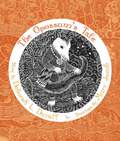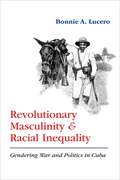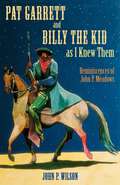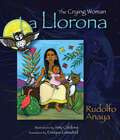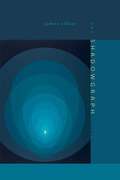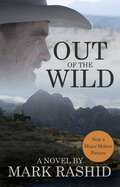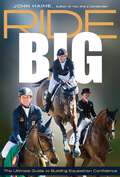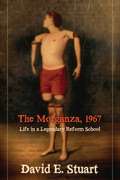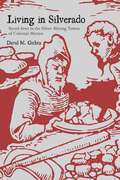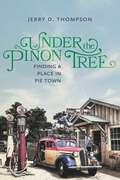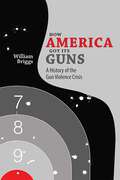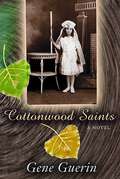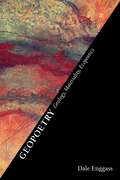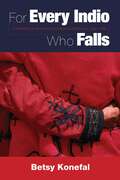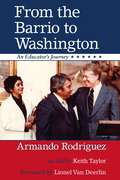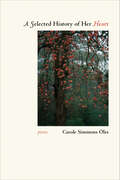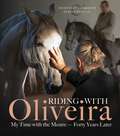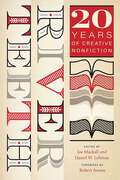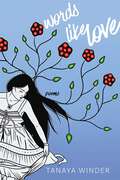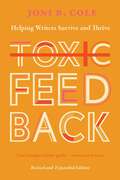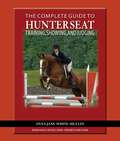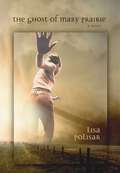- Table View
- List View
The Opossum's Tale (The Grandmother Stories)
by Deborah L. DuvallHave you ever seen an opossum, hurrying across the road with its eyes and coat shining in your headlights? Or hanging upside down from a tree? Or lying on the ground 'playing possum' as if dead? And did you ever wonder why the opossum acts this way? The ancient Cherokee people wondered about the opossum, whose silly grin and hairless tail caught their imagination. In those days, the people had no written language, and they relied on stories to explain the behavior of the animals in their world. According to Cherokee legend, the Opossum owned a magnificent tail, covered in glistening fur, of which he was terribly proud. The tail was so magnificent, in fact, that the Opossum thought it his duty to make everyone else appreciate it as well. In this seventh volume of the Grandmother Stories, Si-qua the Opossum brags constantly about his tail until his neighbors can stand it no more. Something must be done about him! The prideful Si-qua is overcome by loss and despair when his outer beauty is suddenly gone. But an unexpected ally helps Si-qua discover powerful abilities within himself that will soon win the true admiration of his friends. Visit the authors' website at www.jacobandduvall.com.
Revolutionary Masculinity and Racial Inequality: Gendering War and Politics in Cuba
by Bonnie A. LuceroOne of the most paradoxical aspects of Cuban history is the coexistence of national myths of racial harmony with lived experiences of racial inequality. Here a historian addresses this issue by examining the ways soldiers and politicians coded their discussions of race in ideas of masculinity during Cuba&’s transition from colony to republic. Cuban insurgents, the author shows, rarely mentioned race outright. Instead, they often expressed their attitudes toward racial hierarchy through distinctly gendered language—revolutionary masculinity.By examining the relationship between historical experiences of race and discourses of masculinity, Lucero advances understandings about how racial exclusion functioned in a supposedly raceless society. Revolutionary masculinity, she shows, outwardly reinforced the centrality of color blindness to Cuban ideals of manhood at the same time as it perpetuated exclusion of Cubans of African descent from positions of authority.
Pat Garrett and Billy the Kid as I Knew Them: Reminiscences of John P. Meadows
by John P. WilsonCowboy, army guide, farmer, peace officer, and character in his own right, John P. Meadows arrived in New Mexico from Texas as a young man. During his life in the Southwest, he knew or worked for many well-known characters, including William &“Billy the Kid&” Bonney, Sheriff Pat Garrett, John Selman, Hugh Beckwith, Charlie Siringo, and Pat Coghlan. Meadows helped investigate the disappearance of Colonel Albert Jennings Fountain, and he later bought part of downtown Tularosa, New Mexico, where he served a term as mayor.The recollections gathered here are based on Meadows&’s interviews with a reporter for the Alamogordo News, a partial transcript of his reminiscences given at the Lincoln State Monument, and a talk he gave by invitation in Roswell, New Mexico, to refute inaccuracies in the 1930 MGM movie Billy the Kid.
La Llorona: The Crying Woman
by Rudolfo AnayaLa Llorona, the Crying Woman, is the legendary creature who haunts rivers, lakes, and lonely roads. Said to seek out children who disobey their parents, she has become a boogeyman, terrorizing the imaginations of New Mexican children and inspiring them to behave. But there are other lessons her tragic history can demonstrate for children. In Rudolfo Anaya's version Maya, a young woman in ancient Mexico, loses her children to Father Time's cunning. This tragic and informative story serves as an accessible message of mortality for children. La Llorona, deftly translated by Enrique Lamadrid, is familiar and newly informative, while Amy Córdova's rich illustrations illuminate the story. The legend as retold by Anaya, a man as integral to southwest tradition as La Llorona herself, is storytelling anchored in a very human experience. His book helps parents explain to children the reality of death and the loss of loved ones.
The Shadowgraph: Poems (Mary Burritt Christiansen Poetry Series)
by James CihlarIn The Shadowgraph James Cihlar explores the ways images, performances, and memories shape and inform LGBTQ+ identity. Golden-age Hollywood cinema—in particular the career of fiercely independent actress Barbara Stanwyck—provides the screen on which Cihlar projects characters and stories bravely, even defiantly, performed. Cihlar&’s commentary on individual films—as well as on human experience and desire—is intense, smart, and right on target.
Out of the Wild
by Mark RashidOne dark, vacant, Nevada night cattle rancher Henry McBride closes his eyes, only to open them and find his life suddenly in shambles, with everything that means anything lost to him forever. Overwhelmed by grief and haunted by guilt, Henry drives away from his past as far and as fast as he can. Jobs, towns, and whiskey come and go. He always tells himself he'll stay just long enough to earn the money he needs to buy his next drink, somewhere else on down the road.But guest ranch owner Jessie King extends an open and forgiving hand to the cowboy, and the arrival of a young mustang stallion—also wounded and alone—ignites a flicker of recognition in Henry. Like him…broken. With Jessie's powerful ability to connect with horses, and her gentle attempts to connect with Henry, time slows enough on the ranch to heal, just a little. But Jessie, too, has an imperfect past, and when her former ranch manager returns with murder in mind, the fragile world she, Henry, and the stallion are building together threatens to come crashing down.
Ride Big
by John HaimeAn easy-to-implement framework proven to grow rider confidence, tested by the world&’s leading equestrian athletes.Without confidence, achievement in competition is unattainable. When confidence is lacking in any sport, equestrian included, chances are your career will be short. Renowned performance coach John Haime has written the book to counter this challenge, providing the mental tools riders need to be better under pressure of all kinds and consistently succeed.Equestrian sport is a partnership: there&’s an equine athlete, and there&’s a human athlete. Haime notes that often, there is an investment in world-class training for one partner (the horse), but not the other (the human). This compromises the potential effectiveness of the horse-and-rider team. It justmakes sensefor equestrians to develop their own skills—mental and physical—and bring more to the partnership.Haime explains that there is what he believes is a crisis of confidence in modern equestrian sport. This has a variety of causes, including: a lack of fundamental mental/emotional structure and development, the presence and prominence of technology in the rider&’s life, and the constant comparisons inherent in social media and a technically &“connected&” existence. Addressing this crisis enables equestrians of all ages and abilities to: communicate better with their horses, both in day-to-day interactions and competition; absorb more in valuable learning situations, such as lessons and clinics; and perform their best when the stakes are high, as when heading into the jump-off or approaching the last fence on the cross-country course.Haime invites readers to dive into three clear and informative areas of exploration:The Confidence Building Blocks:Firm up the fundamentals.The Confidence Builders:Systems and tips to help you build confidence.The Confidence Threats:An inside look at what to watch out for in riding and in competition.Throughout, those who have reached the highest levels on horseback in a number of disciplines share their stories, including Michael Jung, Beezie Madden, McLain Ward, Laura Tomlinson, Harry Meade, Oliver Townend, Mattias Tromp, Casey Deary, Beth Underhill, Fred Mannix, Jared Zenni, Jonathon Millar, and Kelly Soleau-Millar. These Olympians, champions, and medalists explain what they do in the saddle and how their techniques for performing under world-class pressure might help other riders develop a similar kind of confidence. Perhaps even more valuable are the struggles these top competitors share, giving readers the rare opportunity to see how even &“the best of the best&” are human, too.The way riders develop confidence in their equestrian lives is transferable toeverythingthey do: a confident rider can be a confident business person, confident worker, confident spouse, confident parent, and confident friend. In this way,Ride Big!™instills a skill of worth and promise that extends far beyond the show ring.
The Morganza, 1967: Life in a Legendary Reform School
by David E. StuartFresh out of college, David Stuart put off graduate school to take a job close to his West Virginia home as a counselor at the Youth Development Center at Canonsburg, Pennsylvania. Known locally as the Morganza, the facility was founded in the nineteenth century as a farm for orphaned boys. By the 1960s, the Morganza had long been burdened with a sinister reputation when it was converted into a detention center for Allegheny County youth convicted of crimes ranging from petty theft to armed robbery, rape, and murder. Reporting for duty during the racially turbulent and riot-torn summer of 1967, Stuart describes the life of students and staff in what was, in reality, a youth prison camp. Confronted with the glaring shortcomings of the reform school's methods of rehabilitation, Stuart irritated the bureaucracy, advocating for detainees whose only crimes were a lack of education and belonging to the wrong race or economic class. He confronted an establishment that refused to distinguish between hardened criminals and those who would benefit from actual reform. In The Morganza, 1967 Stuart offers a brutally honest--at times touching--insider's view of a juvenile justice system that was badly in need of fixing.
Living in Silverado: Secret Jews in the Silver Mining Towns of Colonial Mexico
by David M. GitlitzIn this thoroughly researched work, David M. Gitlitz traces the lives and fortunes of three clusters of sixteenth-century crypto-Jews in Mexico&’s silver mining towns. Previous studies of sixteenth-century Mexican crypto-Jews focus on the merchant community centered in Mexico City, but here Gitlitz looks beyond Mexico&’s major population center to explore how clandestine religious communities were established in the reales, the hinterland mining camps, and how they differed from those of the capital in their struggles to retain their Jewish identity in a world dominated economically by silver and religiously by the Catholic Church.In Living in Silverado Gitlitz paints an unusually vivid portrait of the lives of Mexico&’s early settlers. Unlike traditional scholarship that has focused mainly on macro issues of the silver boom, Gitlitz closely analyzes the complex workings of the haciendas that mined and refined silver, and in doing so he provides a wonderfully detailed sense of the daily experiences of Mexico&’s early secret Jews.
Under the Piñon Tree: Finding a Place in Pie Town
by Jerry D. ThompsonWinner of the Historical Society of New Mexico Fabiola Cabeza de Vaca Award Raised in Catron County around Pie Town, Jerry D. Thompson is a well-known Southwestern and Civil War historian. Part regional history, part family history, and part childhood memories, Under the Piñon Tree traces the lives of Catron County residents and explores how the area has grown and changed since the Depression and World War II, when Thompson&’s family first homesteaded the area. Those interested in storytelling and history will enjoy this richly detailed account. Under the Piñon Tree is a must-read for anyone interested in New Mexico and the Southwest.
How America Got Its Guns: A History of the Gun Violence Crisis
by William BriggsIn the United States more than thirty thousand deaths each year can be attributed to firearms. This book on the history of guns in America examines the Second Amendment and the laws and court cases it has spawned. The author&’s thorough and objective account shows the complexities of the issue, which are so often reduced to bumper-sticker slogans, and suggests ways in which gun violence in this country can be reduced.Briggs profiles not only protagonists in the national gun debate but also ordinary people, showing the ways guns have become part of the lives of many Americans. Among them are gays and lesbians, women, competitive trapshooters, people in the gun-rights and gun-control trenches, the NRA&’s first female president, and the most successful gunsmith in American history.Balanced and painstakingly unbiased, Briggs&’s account provides the background needed to follow gun politics in America and to understand the gun culture in which we are likely to live for the foreseeable future.
Cottonwood Saints
by Gene GuerinSpanning the twentieth century, Cottonwood Saints chronicles the lives of a New Mexico woman and her son, Michael. Margarita Juana Galvan was born in a lumber camp in 1913 and is brought up like a little princess in her grandparents' hacienda. In contrast, Margarita's adult life is spent in depression-ridden Las Vegas, New Mexico. Told through Michael, Margarita's story embodies the challenges faced by an intelligent, independent-minded girl maturing in a man's world. Margarita and her family's lives intersect with the prominent events of the century: the influenza pandemic of 1918, the rise of the Ku Klux Klan, the Great Depression, and World War II. Based on the life of Guerin's mother, Cottonwood Saints connects the lives of the poorest citizens of New Mexico to the local power structure. The story ends after Michael, who became a priest, must leave his order in disgrace, and with the burial of Margarita in 1991. Cottonwood Saints is a moving family saga, rich in lore and personality and the marvelous culture of New Mexico. Margarita Juana is a powerful woman, a survivor who perseveres against all odds, determined to hold things together. Her story, about the extreme courage of ordinary people, is sad and true and very inspiring.--John Nichols, author of The Milagro Beanfield WarThe lyrical voice will draw you in, but it's Margarita Juana's twentieth-century--spanning story that will keep you reading. Cottonwood Saints paints a northern New Mexico on the brink of change its characters both embrace and fear. Cottonwood Saints is quietly lovely, heartbreakingly real.--Lisa Lenard-Cook, author of Dissonance and Coyote MorningWith poetic descriptions of countryside and towns struggling to be modern, we are taken through the late nineteenth century in Las Vegas, New Mexico, in its growing pains as a railroad town, the hardships of World War II both for those who participated in the Baatan march and those who stayed behind, to the contemporary period. Guerin has exactly captured a period from rural life to contemporary life, with all its disappointments and challenges.--Tey Diana Rebolledo, department of Spanish, University of New Mexico
Geopoetry: Geology, Materiality, Ecopoetics (Recencies Series: Research and Recovery in Twentieth-Century American Poetics)
by Dale EnggassAt its core, geopoetics proposes that a connection between language and geology has become a significant development in post–World War II poetics. In Geopoetry, Dale Enggass argues that certain literary works enact geologic processes, such as erosion and deposition, and thereby suggest that language itself is a geologic––and not a solely human-based––process. Elements of language extend past human control and open onto an inhuman dimension, which raises the question of how literary works approach the representation of nonhuman realms. Enggass examines the work of Clark Coolidge, Robert Smithson, Ed Dorn, Maggie O&’Sullivan, Jeremy Prynne, Jen Bervin, Christian Bök, and Steve McCaffery, and he finds that while many of these authors are not traditionally connected to ecocritical writing, their innovations are central to ecocritical concerns. In treating language as a geological material, these authors interrogate the boundary between human and nonhuman realms and offer a model for a complex literary engagement with the Anthropocene.
For Every Indio Who Falls: A History of Maya Activism in Guatemala, 1960-1990
by Betsy KonefalIn 1978, a Maya community queen stood on a stage to protest a massacre of indigenous campesinos at the hands of the Guatemalan state. She spoke graphically to the dead and to the living alike: Brothers of Panzós, your blood is in our throats!Given the context, her message might come as a surprise. A revolutionary insurgency in the late 1970s was being met by brutal state efforts to defeat it, efforts directed not only at the guerrilla armies but also at reform movements of all kinds. Yet the young woman was just one of many Mayas across the highlands voicing demands for change. Over the course of the 1970s, Mayas argued for economic, cultural, and political justice for the indigenous pueblo. Many became radicalized by state violence against Maya communities that soon reached the level of genocide.Scholars have disagreed about Maya participation in Guatemala's civil war, and the development of oppositional activism by Mayas during the war is poorly understood. Betsy Konefal explores this history in detail, examining the roots and diversity of Maya organizing and its place in the unfolding conflict. She traces debates about ethnicity, class, and revolution, and examines how (some) Mayas became involved in opposition to a repressive state. She looks closely at the development of connections between cultural events like queen pageants and more radical demands for change, and follows the uneasy relationships that developed between Maya revolutionaries and their Ladino counterparts. Konefal makes it clear that activist Mayas were not bystanders in the transformations that preceded and accompanied Guatemala's civil war--activism by Mayas helped shape the war, and the war shaped Maya activism.
Horse Profiling: The Secret to Motivating Equine Athletes
by Kerry ThomasThe Thomas Herding Technique is thoroughly explained in this book that helps trainers of top equine athletes get them to perform their very best while living happy, contented lives. While following wild horse herds in Wyoming and Montana, independent researcher Kerry Thomas realized that what is inside the horse (emotional conformation) and not what is outside (how a horse is built, or its physical conformation) is what governs herd dynamics. He determined that this was the basis for everything horse: whatever role a horse plays in a human environment-whatever breed, sport, or job-the emotional conformation dictates, in large part, success or failure. Thomas identified a system of emotional profiling-the Thomas Herding Technique-that enables him to determine a horse's performance tendencies, and then began to develop ways in which horses can be mentally conditioned toward a given goal. The technique is already used by some leading racehorse training and breeding programs in the world, and this book explains this unique way of analyzing the psyche of the equine athlete for all horses, and particularly those in competitive careers where performance is a primary focus--
From the Barrio to Washington: An Educator's Journey
by Keith Taylor Armando RodriguezWhat would be the odds of a poor Mexican boy who migrated with his family to southern California in the 1920s rising through the ranks of the American education system to become the first Hispanic principal of a junior and senior high school in San Diego, the second Hispanic to be a college president in California, and to serve in the administrations of four U.S. presidents? Armando Rodriguez spoke no English when he first set foot in the United States and was just old enough to start school in a district with few Spanish-speaking teachers. But with parents who emphasized the importance of education and who taught him the value of hard work, Armando Rodriguez became fluent in English, received a doctorate in bilingual education, and was instrumental in developing the field of bilingual education while serving as Assistant Commissioner of Education for the nation. Rodriguez recalls his inspirational journey from a short child who was so dark he was nicknamed Shadow to being influential in shaping education on district, state, and national levels. Some still call him Shadow, though it is now spoken with respect and admiration for an immigrant who overcame many obstacles to become an instrument of change for his country.Armando Rodriguez offers the gift of his fascinating life in this timely and candid autobiography of a poor immigrant child who arrived speaking no English and climbed the entire staircase of the American dream to power in Washington.--Eleanor Holmes Norton
A Selected History of Her Heart: Poems (Mary Burritt Christiansen Poetry Series)
by Carole Simmons OlesTravel, blood, and transgression are the materials that art shapes in these poems. Carole Simmons Oles&’s work moves among physical, spiritual, and metaphorical frontiers where East meets West, where relationships are forged and broken, and where a woman can now process and reflect on the experiences that have shaped her life.
Give Your Horse a Chance
by Lt Col D'EndrodyMany masters of horsemanship have studied horses and riding over the last centuries, but few have given the subject greater consideration than Agoston d'Endrödy. In preparing this book, he gave considerable thought to the practical principles of riding and to the process of becoming a good rider. And he explains why horses perform more or less successfully according to whether they are mounted by a talented rider or by one of limited natural abilities. InGive Your Horse a Chance, his goal is to reduce the disparity between these two divisions of riders by carefully delineating the processes of good riding and training.The first part of the book explains the proper development of horse and rider so that both learn to enjoy their work. The latter part offers excellent, concise training advice for combined training and show jumping.
Riding with Oliveira
by Dominique BarbierThe true Mestre is a person who directs and changes your life. Renowned champion of classical equitation principles and bestselling author Dominique Barbier names the revered Portuguese equestrian Mestre Nuno Oliveira as his. &“Through great discipline, scholarly, serious inquiry and analysis, and a nonstop relentless passion, he formed his understanding of the Equestrian Art,&” says Barbier. &“As any student of Mestre Nuno Oliveira will know, he was anything but a simple man.&”Over several years Barbier had the unique opportunity to form an intimate relationship with Mestre Oliveira. In this deeply personal book Barbier chronicles their time together. Beginning in a tiny, dimly lit riding hall in Póvoa de Santo Adrião, Portugal, where seminal moments of Barbier's riding education dawned under the watchful eyes of many luminaries of the European riding elite, the book then explores what came later when Barbier studied with the Mestre in Avessada and traveled with him to Belgium. Barbier's recollections are complemented by those of three other equestrians who learned from the Mestre: Dany Lahaye, Bettina Drummond, and Luis Valença. The result is a remarkable and insightful retrospective of one of the most extraordinary horsemen of all time.
América invertida: An Anthology of Emerging Uruguayan Poets (Mary Burritt Christiansen Poetry Series)
by Jesse Lee KerchevalAmérica invertida introduces twenty-two Uruguayan poets under the age of forty to English-speaking audiences for the first time. Kercheval paired poets and translators to produce a rich volume based on a multicultural dialogue about poetry and the written word. América invertida presents Spanish poems and their English translations side by side to give readers an introduction to Uruguay&’s vibrant literary scene.
River Teeth: Twenty Years of Creative Nonfiction
by Joe Mackall Daniel W. LehmanNationally recognized River Teeth: A Journal of Nonfiction Narrative has published a host of new and significant voices in creative nonfiction—including essays, memoir, and literary journalism—since 1999. To celebrate twenty years of introducing talented new writers to readers and publishing great nonfiction, the founding editors, Joe Mackall and Daniel W. Lehman, have selected their all-time favorite essays published in River Teeth in this stunning collection. Essays include up-and-coming authors as well as luminaries such as Ann Hood, Lee Martin, Chris Offutt, Angela Morales, Brenda Miller, Judith Kitchen, Ted Kooser, and Andre Dubus III. River Teeth: Twenty Years of Creative Nonfiction further includes a thoughtful foreword by Robert Atwan that illuminates the importance, breadth, and reach of the journal and shows the diversity of nonfiction writing available in the twenty-first century. A trailblazing publication since its inception, River Teeth continues to share the important work of contemporary writers and will thrive for years to come.
Words Like Love: Poems
by Tanaya WinderTanaya Winder&’s Words Like Love sings the joys, glories, and laments of love. As an accomplished poet, Winder traverses the darkness in a quest to learn more about the most complex of subjects. With beauty and ease, she explores emotion and thought through the poems featured in this debut collection.
Toxic Feedback: Helping Writers Survive and Thrive, Revised and Expanded Edition
by Joni B. ColeFrom veteran teacher and acclaimed author Joni B. Cole comes a revised and expanded edition of her popular writing guide Toxic Feedback. Successful writers know that feedback is often the difference between writing and not writing, and between writing and writing well. But feedback mismanaged is more likely to leave the writer confused, intimidated, or even deflated. This book not only detoxifies the feedback process with humor, but it also shows writers and feedback providers how to make the most of this powerful resource at every stage of the writing and publishing process. This new edition includes a second preface, four new chapters, updates throughout the original material, and several additional exercises. Cole also includes new and previous interviews with authors such as Khaled Hosseini, Juan Morales, Grace Paley, Jodi Picoult, and Matthew Salesses. Toxic Feedback remains essential reading for all writers, critique groups, MFA programs, and teachers of writing at every level.
Complete Guide to Hunter Seat Training, Showing, and Judging
by Anna Jane White-MullinThe USEF and USPC have both listed this title as recommended reading.Never before has such a complete text on the American hunt seat and equitation disciplines been compiled! Based on Anna Jane White-Mullin&’s now out–of–print bestsellerWinningand chock full of gorgeous, full–color photographs taken at Beacon Hill Show Stables owned by Stacia Madden,The Complete Guide to Hunter Seat Training, Showing, and Judgingprovides every aspiring equestrian the means for achieving greatness in the show ring.Beginning with a comprehensive overview of the basic principles of horsemanship—recently re–emphasized as compulsory by such luminaries of the sport as George Morris— and progressing through essential schooling exercises in the development of the hunter or equitation mount, as well as advanced concepts applicable to upper–level competition, Part One lays the amateur&’s riding and training foundation.You&’ll find:Discussion of collection and lengthening—long, medium, and short frames.Flatwork for improving the basic gaits—cadence, pace, and transitions.Training and showing tips for USEF Tests 1–19—patterns and how to prepare for them.Introduction to hunter and equitation jump courses—basic, intermediate, and advanced.As an added bonus, the education of the rider is made complete with the inclusion of White–Mullin&’s famous text on judging hunters and equitation. Offering a complete discussion of the USEF rules, requirements, and tests, the second part of the book explains what judges look for and the training methods necessary to achieve the desired results.
The Ghost of Mary Prairie
by Lisa PolisarIt's 1961, Grady, Oklahoma, population 103. Fifteen-year-old Jacob Leeds lives in a modest house on Hooper Circle. His world includes a wily sister, provincial parents, a grandfather named Woody, and an obsession with superheroes. Peel back one layer, though, and find a very different Hooper Circle--one teeming with lies, a family cover-up, and a secret that will change Jake forever.The summer of 1961 begins with a teenage initiation rite for Jake, delivered by his best friend, Mikey Savage: Initiation into Manhood--sleep on bare ground in the old baseball diamond. No sleeping bag, no shoes, no blanket. How difficult could it be?Pirate songs and funny stories accompany him in the darkness, until he hears the first of the screams. As he approaches the sound, he sees an apparition of a young woman, brutally beaten. He tries to run away, but finds he's running toward her. When Jake tells Mikey the story, he learns the legend of Mary McCann--a murdered Grady girl who to this day haunts the Oklahoma prairie in search of her killer. For Jake, this sighting marks the end of his childhood and the beginning of his quest to find the truth of her story.During a beastly-hot Oklahoma summer, on a hard-scrabble farm, Jake Leeds makes the emotional journey from easy boyhood to complicated adolescence when he uncovers a mystery that points to shattered truths and stunning secrets. Lisa Polisar's moving story and elegant prose bring vitality and wonder to an ages-old theme, turning The Ghost of Mary Prairie into a contemporary masterpiece.--Pari Noskin Taichert, two-time Agatha Award finalist
